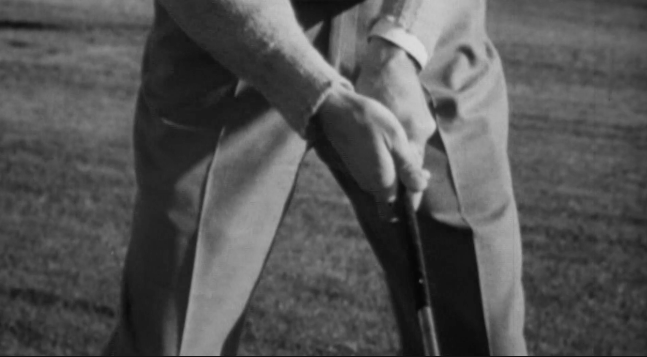As someone who has done his share of USGA, uh, critiquing, I found the Golf Digest “USGA Confidential” an interesting read at times. However, I can’t help but think most readers will come away finding golf pros and their “teams” to be inconsistent, a tad greedy and unsatisfiable even in the face of obvious mistakes, some of them colossal ones.
Particularly since the elephant in the room—regulating a distance explosion overwhelming courses—is a non-starter for a large percentage of players.
By the end of their venting, I was exhausted, in part because no single person willingly putting their name on such strong views. The totality could leave some readers USGA-sympathetic and annoyed by the understandably-annoyed golfers.
The headline-maker from the impressive effort of gathering 57 voices—35 current players and 16 major champions—was talk of an organized U.S. Open boycott. An unnamed player named names of potential boycotters:
MULTIPLE PGA TOUR WINNER: We had about 10–15 guys who were willing to sit out after 2016. Some of them were big names—Dustin was one, Rory was another.
ANOTHER MAJOR CHAMPION AND FORMER WORLD NO. 1: I was prepared to do it [take part in a boycott]. Absolutely.
ANOTHER MAJOR CHAMPION: I was one of them.
MULTIPLE PGA TOUR WINNER: I would have boycotted if it had come to that. If it wasn't a major, I wouldn't play it, and a lot of other guys feel that way.
MULTIPLE PGA TOUR WINNER: I figure we needed about 25 guys, and I think we could have gotten there based on what I was hearing from players. Really, just one would have done it, but Tiger wasn't playing at the time. Without us, they don't have a tournament.
Actually, it’s a 156-player field with a majority of the spots earned by qualifiers and would have continued on with the same purse and 156 players.
That the “stars” of the game think they could somehow shut down the U.S. Open, yet are unwilling to sign their name to the view, suggests a level of isolation from reality that might run deeper than we imagined.
Sorry boys, but only one player on the planet pulling a protest no-show would have significant meaning.
As for course setup issues, this collection speaks to the can’t-win issues facing the USGA in trying to balance a sense of fairness, difficulty and creativity in a game overwhelmed by modern distances.
MULTIPLE PGA TOUR WINNER: I miss the U.S. Opens of old, where you had narrow fairways and thick rough, and it tested everything.
FORMER EUROPEAN RYDER CUP CAPTAIN: The old DNA was worth defending. It had always been that way. The majors should pose different questions. The Open is about the weather. The Masters is about the course. The PGA is a more difficult PGA Tour event. And the U.S. Open is about narrow fairways. What makes Grand Slam winners so great is that they've passed all four tests.
WINNER OF MORE THAN 20 EUROPEAN TOUR EVENTS: The U.S. Open was always the fairest of the four majors. It was tough, but only bad shots were punished. As we saw at Paris [in the 2018 Ryder Cup], that's the way forward.
FORMER EUROPEAN RYDER CUP CAPTAIN: The Ryder Cup last year was more about accuracy, and the Americans couldn't hit the ball straight. At Erin Hills, the fairways were 60 yards wide. That's not a U.S. Open. But the USGA has adapted to the modern game rather than making the game adapt to the U.S. Open. If a 280-yard drive straight down the middle was most beneficial, no one would be hitting drives 350 yards. Straight should be as important as long.
MULTIPLE EUROPEAN TOUR WINNER: The wide-fairways thing is not working. Too many guys have no chance if you don't hit it 350 yards off the tee.
Got all of that?
Finally, the notion of the USGA building permanent, 8,500 yard venues on the coasts, first floated by CBS’s Peter Kostis many years ago, offered up the world’s golf architects for free to design the facilities and end the practice of going to golf’s iconic venues. Of course, it’s a fine idea in terms of practicalities but a dreadful notion to throw out history, character and golf’s ties to its past so that distance can go unregulated.
Kostis surfaced with the idea again, followed by many more who reinforce how all of this whining, inconsistency and silliness could all be solved with a 10% reduction in distance and a foot or so off the Stimpmeter speeds.
TEACHER OF MULTIPLE MAJOR CHAMPIONS: I said this a long time ago and was ridiculed: I would prefer for the USGA to buy land on the East Coast of the U.S. and on the West Coast of the U.S., then build two facilities for the U.S. Open. Each would have four courses. And each one would be designed to present the examination they wish to present to the players. If they want tight fairways and long rough, so be it. They're entitled to conduct their championships any way they want. So build courses to fit that ideal, whatever it might be. If they did that, they would stop ruining the classic courses by trying to jerry-rig them.
Like I said, there is a lot to Digest in this one and most of it leaves you wondering if there are many Jack Nicklaus, Tiger Woods and a few others who will put the game above themselves.

























